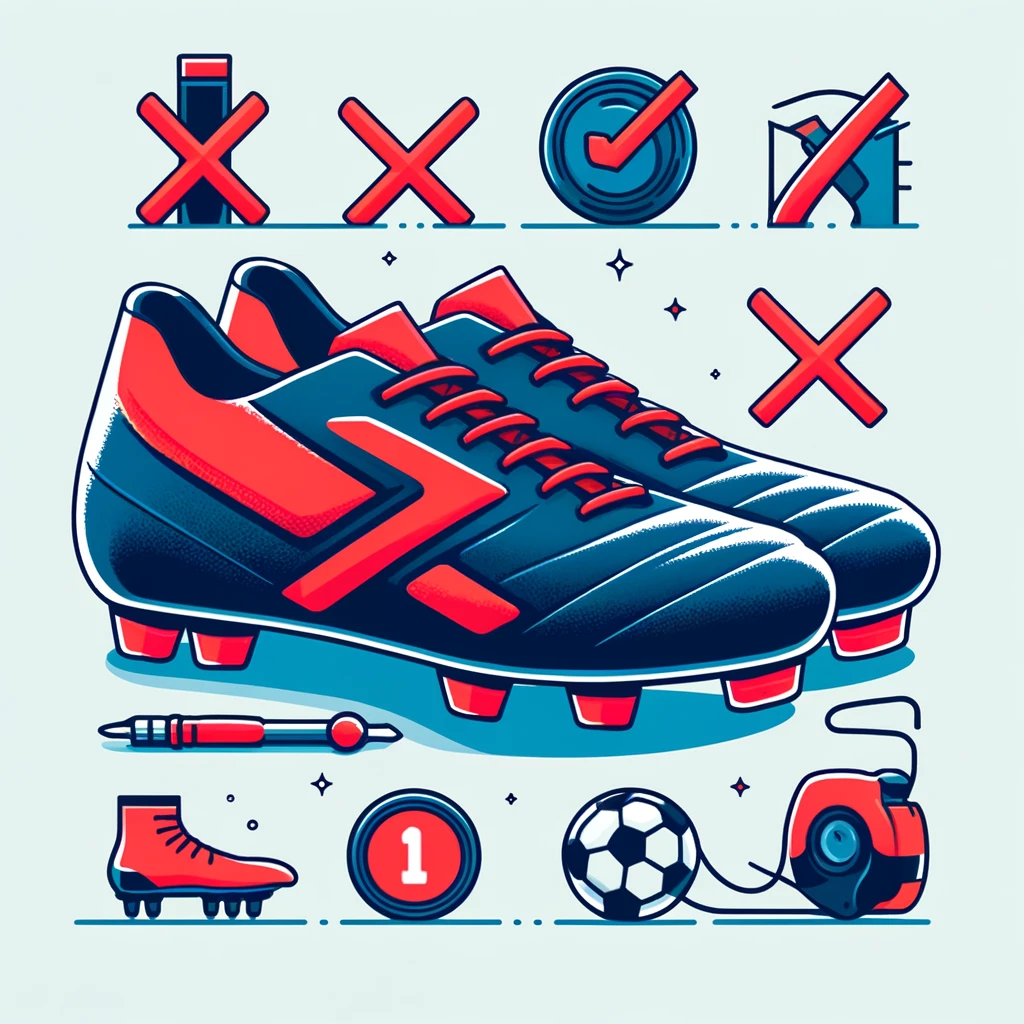Selecting the right soccer shoes is critical not just for comfort but also for performance and injury prevention. This guide will help you navigate common pitfalls in the process and ensure you choose the best pair for your needs.
Introduction
Buying soccer shoes might seem straightforward, but several common mistakes can adversely affect a player’s experience and performance on the field. Understanding these errors can help you make better choices.
Common Mistakes to Avoid
Mistake 1: Choosing Style Over Function
- Impact: Players often choose shoes based on looks or because they are endorsed by a professional player. However, comfort and suitability should be the primary considerations.
- Solution: Focus on shoes that meet your specific athletic needs rather than those that merely look good or are popular.
Mistake 2: Ignoring Fit
- Impact: Wearing soccer shoes that fit poorly can lead to blisters, discomfort, and even long-term foot injuries.
- Solution: Always try on soccer shoes with the socks you will wear in games. Ensure there is a thumb’s width of space at the toe and that the shoes are snug but not tight.
Mistake 3: Not Considering Playing Surface
- Impact: Soccer shoes are designed for specific types of surfaces, such as grass, turf, or indoor arenas. Using the wrong type can affect traction and increase injury risk.
- Solution: Select cleats based on the type of surface you play on most often. For example, choose FG (Firm Ground) cleats for natural grass fields and AG (Artificial Ground) cleats for synthetic fields.
Mistake 4: Overlooking the Importance of Material
- Impact: The material of the soccer shoes affects their durability, flexibility, and how they mold to your feet.
- Solution: Leather shoes offer better moldability and comfort, while synthetic materials provide better water resistance and are usually lighter.
Mistake 5: Neglecting to Test Shoes Properly
- Impact: Not properly testing shoes before purchase can result in discovering they’re uncomfortable or perform poorly during actual games.
- Solution: Test the shoes by walking and running briefly on a similar surface to what you’ll play on. Some stores may have a testing area.
Frequently Asked Questions (FAQs)
What is the best way to determine the right size for soccer shoes?
To determine the right size, measure your foot in centimeters and refer to the brand’s sizing chart, as different brands might have slight variations. Ensure the shoe fits snugly without causing discomfort, leaving about a thumb’s width of space in the toe area.
Can I use the same soccer shoes for different types of playing surfaces?
It’s not recommended to use the same soccer shoes for different surfaces. Shoes are specifically designed for certain types of fields to provide appropriate traction and durability. Using them on inappropriate surfaces can lead to premature wear and potential injuries.
How often should I replace my soccer shoes?
Replace your soccer shoes at least every season or sooner if they show significant wear. Frequent players might need to replace their shoes more often due to the stress and wear from regular play.
Are expensive soccer shoes always better?
Not necessarily. While more expensive shoes often feature advanced technologies and materials, the best shoe for you is the one that fits your foot well, meets your specific performance needs, and aligns with your budget.
What should I consider if I have wide feet?
Look for brands that offer models with wider options or choose materials like leather that naturally stretch to accommodate wider feet. Make sure to try on shoes later in the day when feet are naturally more swollen to get a better fit.
Is it okay to buy soccer shoes online?
Buying soccer shoes online is convenient, but ensure the retailer has a good return policy since you can’t try the shoes on before purchasing. It’s ideal to know your size in the specific brand or to have tried a similar model in person before ordering.
How can I make my soccer shoes last longer?
To extend the life of your soccer shoes, clean them after each use, dry them naturally away from direct heat, and store them in a cool, dry place. Also, use them only on the appropriate playing surfaces to avoid unnecessary wear.
Conclusion
Avoiding these common mistakes when buying soccer shoes can greatly enhance your playing experience and help prevent injuries. Take your time to research, try on different options, and choose wisely based on your needs rather than trends.
Check our blog for more useful articles!

